This flight test first appeared in the August 2013 edition of Australian Aviation.
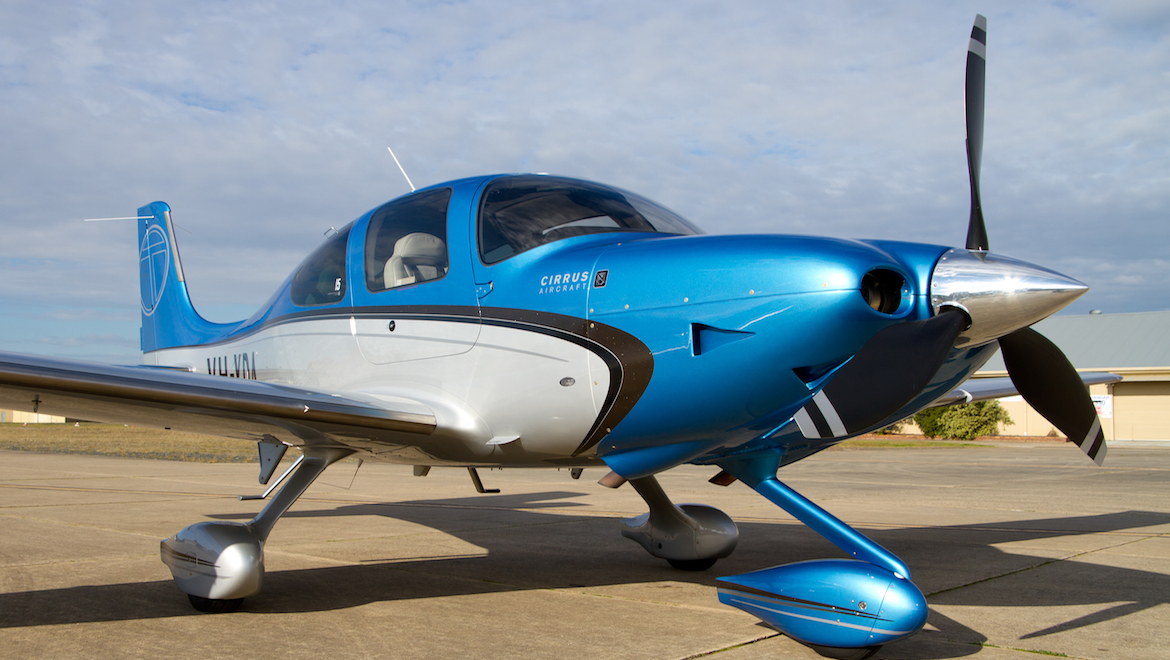
The newest addition to the Cirrus family has just landed on our shores and Australian Aviation was one of the first to take a close-up look at this latest offering. The turbocharged SR22T GTS’s title comes with the added label of G5 denoting that this aircraft is the fifth generation in the SR22’s lineage.
Looks can deceive
The dawn of the new age is definitely upon us. Ever-increasing numbers of new composite aircraft types with advanced avionics are appearing, exerting more and more pressure upon the ageing fleets of analogue-equipped metal airframes. Whichever side of the fence you may choose to sit, this evolution is inevitable and evident everywhere you look.
A high number of these new types employ the efficient, lightweight form of high-aspect ratio wings and narrow aft fuselage sections reminiscent of glider design. It is a winning formula in many instances and yet when first confronted by a Cirrus it appears that a different design philosophy has been adopted. But looks can be deceiving.
The first impression of an SR22 is one of substance. It sits taller than many of its contemporaries and its aft fuselage doesn’t taper down to the same degree as other designs. It still boasts very sporty lines, but its overall presence is more in keeping with the balance of a traditional looking touring aircraft. However, when the numbers are examined more closely, its design is most definitely of the new age.
Its 11.7m wingspan is on par with comparable types and its wing area of 13.5m2 is almost identical. Similarly, its aspect ratio is in the same ball park. The SR22’s wing is an equally efficient high-aspect ratio wing, but it is masked to a high degree by the shape and height of the fuselage.
With a MTOW of 1,633kg it is a heavier airframe than others in the market and this obviously equates to a higher wing loading. However, the SR22T GTS G5 (T being for turbo) has a Continental TSIO-550-K turbocharged, fuel-injected six-cylinder engine generating 315hp (235kW) at 2,500rpm. That equates to a power-loading of around 11lb per horsepower. This aircraft packs a punch.
For all of the numbers, this Cirrus Generation 5 is fundamentally a powerful touring aircraft capable of flight in the flight levels at over 200kt. It boasts a very generous, efficient wing form. It just conceals it through a very balanced overall appearance. However, this first impression only scratches the surface and its beauty is truly more than skin deep.

An impressive blood-line
Cirrus proudly states the SR22 has been “the world’s best-selling piston single for over 10 years”.
From its base model that was first certified in 2000, the type has evolved through turbocharged variants to the latest G5, which was released this year. During this time Cirrus has continued to prompt excited conversations through its ever-present “wow factor” of sporty performance and the latest in interior comfort and avionics suites.
Additionally, Cirrus has always attracted attention through its standard equipage of the Cirrus Airframe Parachute System (CAPS). Mounted aft of the cabin on the upper fuselage, the CAPS is deployed by a rocket pulling the parachute clear of the aircraft before fully opening the canopy and allowing the airframe to descend at a safe rate back to earth. It can be deployed as low as 600ft and up to 140kt, although there is a recorded successful deployment at 187kt.
VIDEO: A look at the Cirrus Airframe Parachute System from the Cirrus YouTube channel.
As the SR22 design has progressed, it has always maintained a relatively consistent profile that automatically identifies the aircraft as a Cirrus. In fact, parked beside an earlier generation model, the G5 is difficult to discern from its forebear. However, the G5 is a very different aircraft in some very simple, yet significant ways.
First, the MTOW of the aircraft has increased by 90kg over the earlier SR22s to 1,633kg. That simple figure equates to an additional passenger or extra baggage that can be uplifted. Coincidentally, the rear seat now has the capability to seat three people, although those people would most likely be children.
In terms of performance, the turbocharged G5 has a maximum true-airspeed of 214kt and a maximum altitude of 25,000ft. With a maximum fuel capacity of 350 litres the aircraft has a range of more than 800nm. Now let’s tie these numbers together into a real-life scenario.
The fixed-gear G5 can lift four standard adults, fly at a true airspeed of 210kt in the flight levels and still have a range of 1,890km for the Turbo or 2,164km for the normally-aspirated G5. Impressive!
The increase in MTOW meant that the wing spar needed to be strengthened and that increase in weight was offset by sacrifices elsewhere in the standard give-and-take of aircraft design. However, a tremendous by-product of the development of the G5’s wing was a strengthening of the flaps allowing deployment of the first stage of flap (50 per cent) up to 150kt, an increase from the 119kt of its predecessor. For a high performance aeroplane this is a tremendous asset in slowing down as the traffic pattern looms ahead.
The G5 also possesses approval to fly into known icing conditions. Tell-tale strips on the leading edges of the wing, fin and tailplane permit the release of de-icing fluid while the propeller and windscreen also receive their share through small jets. And while flight in known icing conditions for two-and-a-half hours is nobody’s idea of fun, the G5 carries enough fluid to do just that.
The increased MTOW, flap deployment speed and flight into known icing approval are the big ticket items for me and yet the G5 comes with a whole host of new or improved features. There is live datalink weather and thermal infrared imaging available on the instrument panel’s 12in Garmin screens through the Cirrus “Perspective” avionics suite, an enhanced version of the G1000.
There is a digital autopilot and electrically powered air conditioning, inbuilt oxygen system, ADS-B equipped transponder, integrated satellite phone, FMS keypad and a digital autopilot. Significantly, the avionics suite has dual AHRS, air data and electrical feeds so that in the event of a failure there is a seamless transfer with no loss of data.
The G5 is equipped with everything you could ever imagine on an airliner’s flightdeck, let alone a single-engine piston aeroplane. It’s an impressive aeroplane to the beholder, but the real test as always lies in flight.
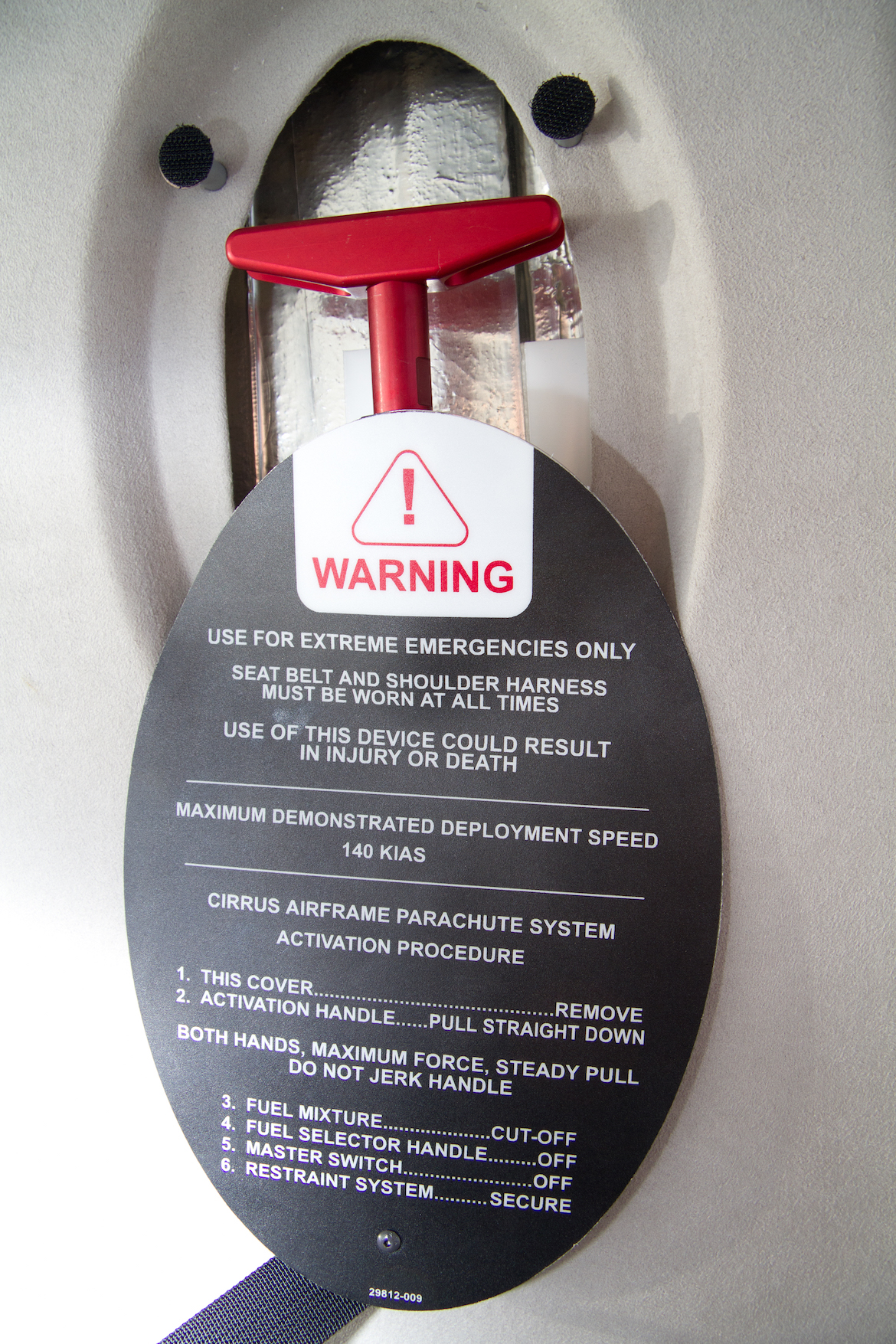
Getting started
Graham Horne is the regional director for Cirrus Aircraft in Australia and South East Asia. When I first met him at Bankstown Airport, he was smiling from ear to ear having just flown the Cirrus on one of the last legs of his around Australia tour.
I suspect it is not just the iPhone photo of the Cirrus’ airspeed indicator showing a TAS of 210kt that has him smiling. He looks refreshed after a long flight and that speaks volumes for the aeroplane’s interior comfort even before I step aboard.
We walk around the G5 and Graham highlights the impressive features, dimensions and performance that I have already outlined. I am increasingly warming to the lines of this aeroplane which seems to possess a sprinter’s muscular build in a market dominated by lean distance runners. Its numbers speak of performance and economy, but its appearance oozes power.
The distinctive leading edge is stepped at mid span, with the inboard section possessing a lower angle of incidence. This results in the wing stalling first near the wing root, allowing the outboard section to remain unstalled and the ailerons still effective.
The two wings house the two fuel tanks and the undercarriage is a fixed tricycle arrangement, faired by sleek looking spats. The fixed gear doesn’t seem to impinge upon this aeroplane’s performance, but it surely lowers maintenance costs and removes the chances of an embarrassingly low flare and a wheels-up landing.
The 315hp (235kW) Continental is housed beneath a very sleek cowling with a Hartzell three-bladed lightweight composite propeller out the front. The propeller’s curved blades have sound ground clearance and add to the sense of style generated by the G5.
The entire airframe and wings are primarily constructed from composite materials offering a very smooth finish, only interrupted by the occasional aerial. The CAPS unit is invisible to the eye and a warning decal on the aft fuselage provides the only evidence of its existence.
Entry to the cockpit is via overwing walkways, stepping down through one of two gull-wing style doors, although they are hinged at the doors’ leading edge. Once inside the sense of style and quality of finish is immediately apparent. From iPod input jacks to the shining silver air conditioning outlets, every detail is finished to the highest quality.
The seat is adjustable by a grab-bar beneath the panel and a handle under the front of the seat. Moving forward also elevates the seat and the forward view on offer is ideal with all major controls and switches within easy reach.
I note the leg room behind me is generous as is the head room above me. On the ceiling is the CAPS firing handle, whose safety pin has now been stowed prominently on the forward instrument panel.
Centrally located on the pedestal is the fuel selector, boost pump, throttle and mixture control. There is no pitch lever and this turbocharged engine drives a consistent 2,500rpm with power being set as a percentage. It is a simple arrangement and a far cry from the early turbocharged pistons with jamming waste-gates and the ever-present threat of over-boosting.
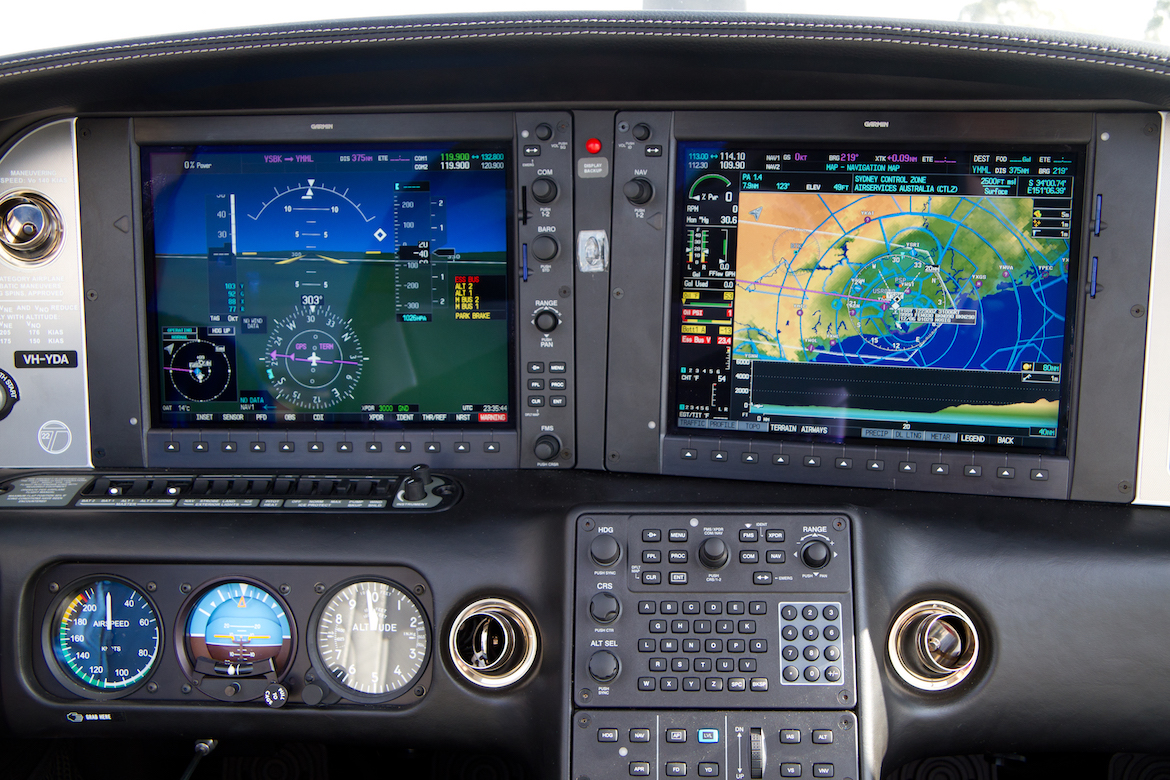
Ahead of the centre panel is the FMS keypad and the autopilot merging further forward into the instrument panel dominated by two massive Garmin EFIS screens. The “Cirrus Perspective” offers a huge range of options to the pilot from Synthetic Vision Technology and infrared displays seeking out the heat of runway lights in low visibility to the amazing “Highway in the Sky” boxes as a means of flying a path and a LVL (Level) button on the autopilot.
The LVL button is highlighted by a blue border, and in the event of disorientation and an unusual attitude the pilot need only select the LVL button to engage the autopilot and level the aircraft in one simple step. Even so, a panel of three standby analogue instruments are at the ready on the instrument panel’s lower edge.
Extending out from the lower outboard edge of the instrument panel is the side-stick for aircraft control. The dual controls sit at a comfortable height and allow the use of an arm rest for support. Between the throttle position and the side-stick, the ergonomic engineers have got it right in this aeroplane.
Starting the G5 could not be simpler. Prime the engine with the mixture and boost pump, set the throttle an inch open and turn the key. As it bursts into life, the full-screen instrument display to my right immediately indicates the engine’s status to the smallest detail. We’re ready to go.

Cirrus in the sky
With the G5 raring to go, I release the park brake and test the ground handling before we move forward an inch. The aircraft has a castoring nosewheel, but it doesn’t feel like it. With a nip of brake and a touch of power, the Cirrus pivots on the inboard wheel as if it’s tethered. It has a very impressive radius of turn to say the least.
Taxiing is best achieved through a small amount of power and then reducing the thrust back to idle, applying intermittent taps of the toe brakes only when needed. Riding the brakes against power on this aircraft is not advised as they’ll overheat, but if you do, guess what – there’s a brake temperature gauge and warning system.
In the run-up bay, the preflight sequences are standard and assisted by digital checklists on the Garmin screen.
Two notable differences are that in the absence of a pitch lever there is no propeller check, and the autopilot is tested by engaging it and moving the heading bug. The side-stick moves in response as if the aircraft is turning before autopilot disengagement is checked.
A runway change dictates an extended taxi to the other end of the airport, but offers another opportunity to observe the gentlemanly ground handling of the G5. However, once the tower clears us for takeoff the gentleman pops into the back seat and the unbridled stallion steps into the picture.
The throttle is advanced fully forward and I am happily pressed back into the seat as the G5 accelerates smoothly but snappily. Minimal rudder input is required to maintain the runway centreline and I quickly achieve my rotate speed of 77kt.
I ease back on the side-stick and the aeroplane smoothly transitions into flight. It doesn’t rear its head up but climbs away in a relatively nose-low attitude, which provides wonderful forward visibility in the high traffic environment.
Ninety knots comes and goes in a blink and I raise the takeoff flap setting of 50 per cent before setting the best rate of climb at 112kt. A sweeping left turn has me positioning for departure and I reach 1,500ft just as I roll out on downwind. With the power reduced to 70 per cent with a constant 2,500rpm, we are indicating 150kts before I raise the nose and climb once more, this time at a cruise climb speed of 120kts.
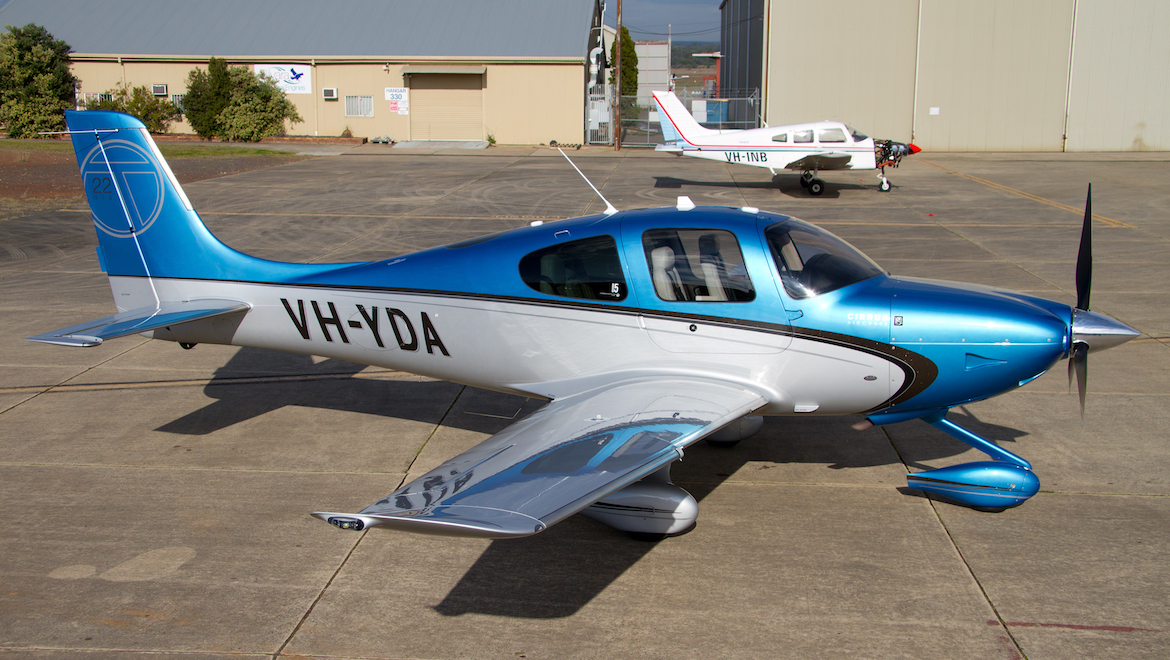
This turbocharged engine is “leaned” in the cruise only, while the non-turbo-charged variant is also leaned on the climb – a task that is made very easy by pulling the mixture lever back to align a marker on the engine display. This marker indicates the optimum lean of peak setting.
From the outset I am captivated by the handling of this aeroplane. It has a very stable feel to it, with no tendency to wallow about or be disturbed by the odd bump in the breeze. The G5 is not heavy on the controls at all, but offers the comfortable ride of a much heavier aeroplane. In many ways it feels like a small business jet.
I then set myself for some basic handling and steep turns and receive a very pleasant surprise. The roll rate of the SR22 is quicker than any other non-aerobatic light aircraft I have flown. It is immediately responsive, both on entry and recovery. There is no lag, no tendency to overshoot the desired angle of bank, just roll-stop-roll again. This is great fun!
And if you wish to cheat, you can roll into a steep turn, place the flight path vector on the flight display’s virtual horizon and you’ll hold your altitude like a star. Be warned, I suspect this feature might be switched off by your friendly flight instructor or examiner. It makes it way too easy!
Should you become over-exuberant and wish to roll the aeroplane even further beyond 45 degrees, you will feel the side-stick opposing you in an attempt to roll the aeroplane back towards level flight.
Climbing up to 4,500ft we assess the aeroplane’s stall characteristics. Even with full flap deployed and around 60kt indicated, the staged leading edge does its job and the inboard section stalls first. There is no tendency to drop a wing and even if it did, aileron control is still available.
It is apparent the G5 has the ability to perform like a sports car, but it is also comfortable at the lower end of the speed spectrum.
While we’re at altitude, we also choose to enter an unusual attitude and select the LVL button. As advertised, the aircraft automatically levels the wings and pitches as required to establish level flight with the autopilot engaged.
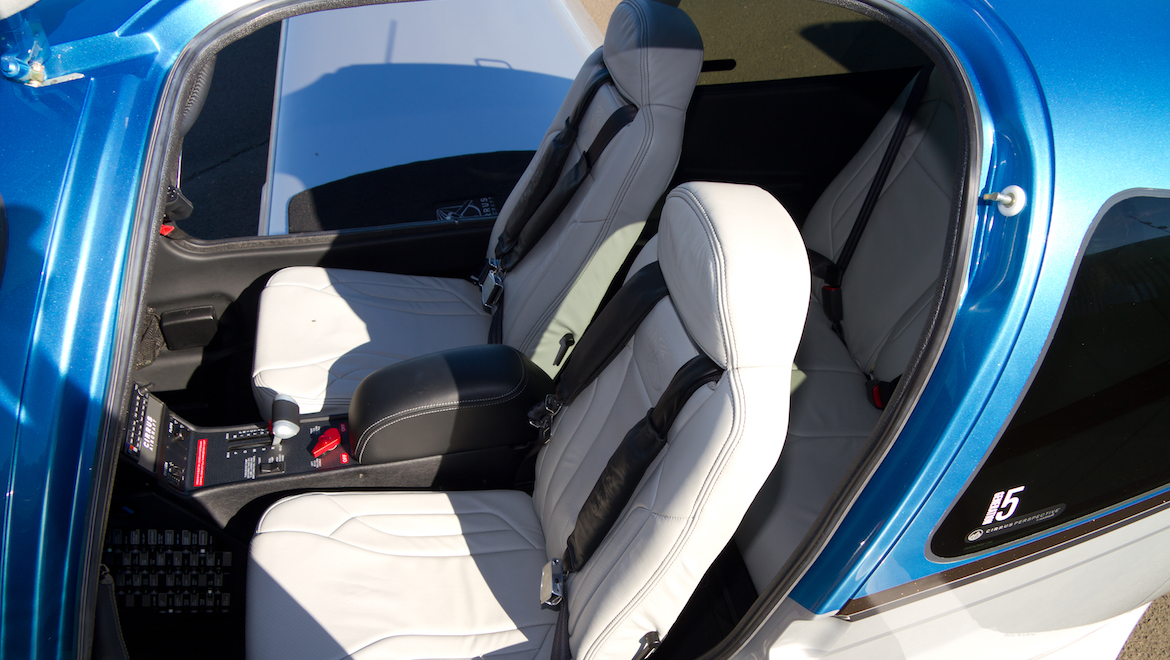
Despite the fun I’m having, Graham insists on engaging the autopilot to demonstrate some of the many functions available. We attempt to climb in vertical speed mode until the speed erodes to the stall speed. The autopilot pitches the aircraft down in advance of this occurring to maintain flying speed.
Between this feature, the roll protection and the ‘LVL’ button, there are a number of levels of protection provided for the pilot who gets into trouble.
The sun is starting to sit a little lower, so I turn for Bankstown and a few circuits to finish the day’s flight. I intentionally maintain a swift cruise speed, partly for function and partly for fun. We are cleared for a straight-in approach and I am effortlessly indicating 170kt in a gentle descent towards the airport. On reaching 1,000ft I level the aircraft, set the power at 55 per cent and the speed begins to erode.
As I pass through 150kt I can now comfortably select the first stage of flap and the effort to slow down is now over. The old flap limit of 119kts may have made this somewhat more difficult, but this new higher speed is an absolute treasure in a high performance single for pilots of all levels of experience.
Keeping the threshold steady in the windscreen, I select the second and final stage of flap passing through 110kts and settle on an approach speed of 90kt. The side-stick control is intuitive and the G5 just sits there on-speed and on-profile.
I bleed the speed a little more to reach the threshold at 80kt and the piano-keys pass beneath. This is an aeroplane of substance, so it is flown right down to the runway like an aircraft of a greater scale, touching down with a relatively nose down attitude for a light aircraft. Power up and away we go again.
As with all aspects of this flight, the G5 is a joy to fly in the circuit. The ability to deploy the flaps at a significant airspeed and their subsequent effectiveness offer a tremendous safeguard for anyone who may approach the circuit a little quickly in this full-blooded aeroplane. Even so, should a go-around be necessary, there were no significant pitch changes with flap selection and re-trimming was easily achieved via the electric trim switch mounted on the side-stick.
It’s getting late and Graham finishes off with an approach to keep his currency from the right-hand seat. It offers me the opportunity to look up and appreciate my surroundings and how easily the G5 works its way around the circuit. Graham eases the Cirrus onto the ground and unfortunately the flight is at an end.

Style and substance
The Cirrus SR22T GTS-G5 is undoubtedly an aeroplane from the top shelf. It has more equipment, bells and whistles than most of the jets I have flown. Even so, it is at its core still a turbocharged, single-engined piston-powered aeroplane with fixed landing gear. It is almost a paradox, but somehow Cirrus has managed to find the perfect blend.
You have to look beyond the amazing level of interior finish and equipment to truly appreciate this aeroplane.
The SR22T performs like a sports car and handles like a small jet, yet it still offers a stable platform for instrument flight, supported by all manner of protections. Its speed is a cross-country asset that can easily be reined around the circuit by virtue of the new top-end flap limit speed.
Like its predecessors, the G5 is a fine looking aeroplane with a performance package to match its looks. The designers have got it right with this aeroplane. They have created an aircraft with just the right mix of style and substance.
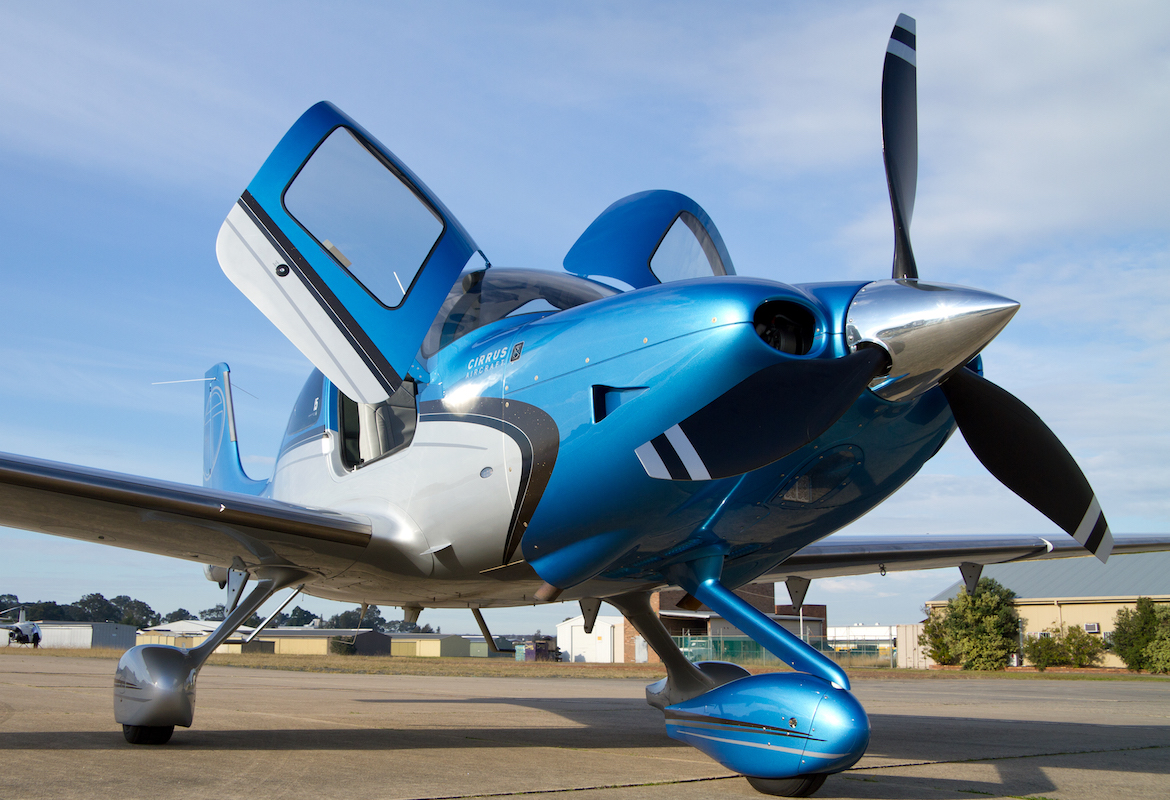
This story first appeared in the August 2013 edition of Australian Aviation. To read more stories like this, become a member here.
















AlanH
says:“Stye and substance”? What?